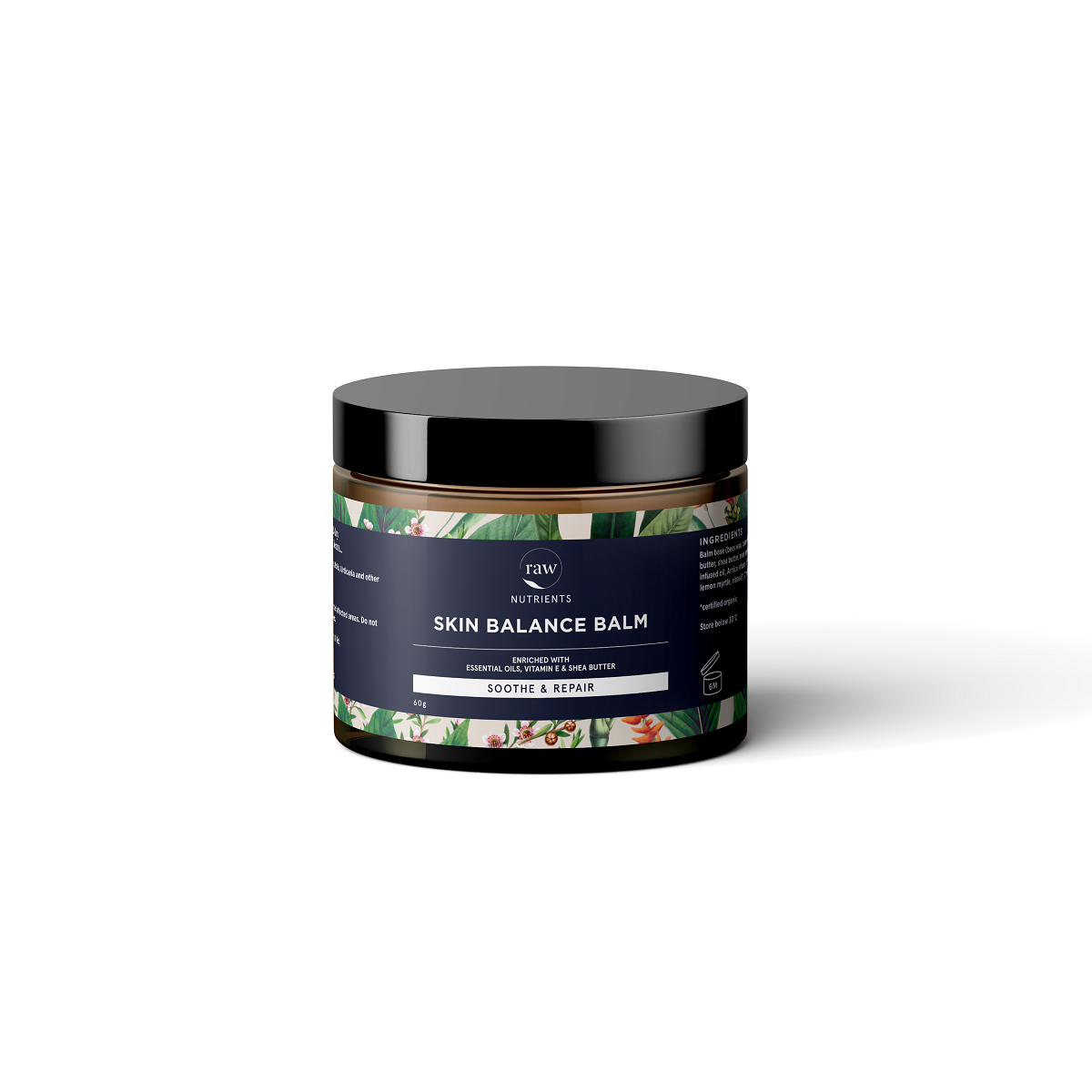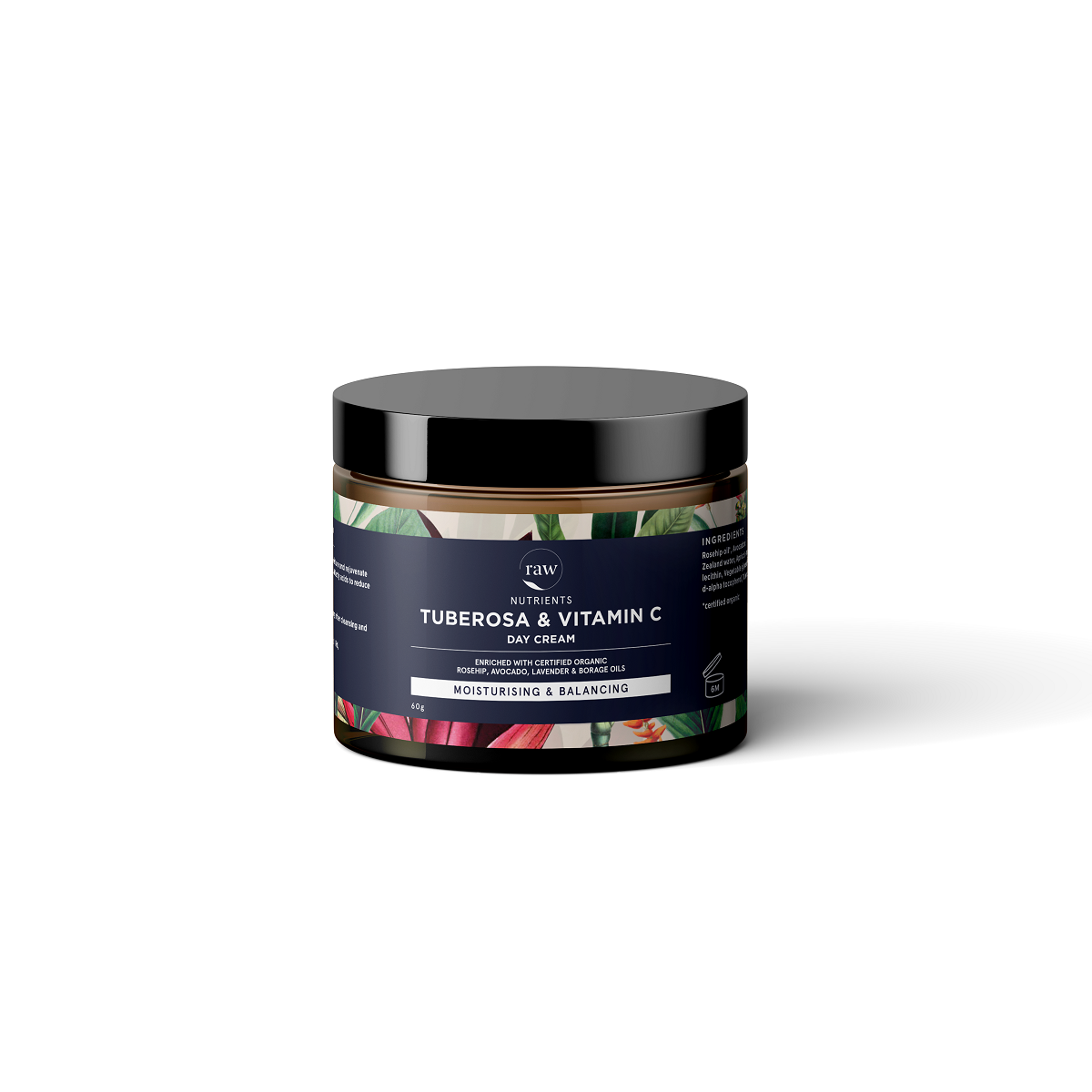-

Think about zinc!
Zinc plays many important roles in your body. This essential dietary mineral is involved in metabolism processes, hel...
-

Magnesium; Are We Consuming Enough?
There is widespread magnesium deficiency, and given the importance of magnesium in the body, it is but essential to r...
-

Probiotics; When & how do they work best?
Your gastrointestinal system comprises different microorganisms. The gut bacteria play a vital role in the health and...
-

Vitamin C; How does it benefit wellness?
Vitamin C has gained popularity as an antioxidant. However, research claims that it can act as both an antioxidant an...

Why Are Minerals Important to Your Diet
Minerals and vitamins are essential for the normal growth and development of your body. You need minerals to support bodily functions.[1] Minerals are crucial for bone development,[2] strengthening hair roots and follicles,[3] heart functioning,[4] supporting immune health,[5] and cell growth. Minerals are categorized as macrominerals[6] and trace elements[7] and must be ingested in required amounts. Too much or too little ingestion of minerals could result in toxicity or nutritional deficiencies.
Too much or deficiency of minerals could cause problems for the body:
- Potassium: Hyperkalemia and hypokalemia[8]
- Chloride: Hyperchloremia and hypochloremia[9]
- Phosphate: Hyperphosphatemia or hypophosphatemia[10]
- Magnesium: Hypermagnesemia and hypomagnesemia[11]
- Sodium: Hypernatremia and hyponatremia[12]
Macrominerals are needed in large amounts. This includes sodium, calcium, magnesium, phosphorus, sulfur, potassium, and chloride. Trace minerals are needed in small quantities. This includes iodine, iron, copper, fluoride, manganese, zinc, cobalt, and selenium.
Adequate intake of minerals is required for cell protection, homeostasis, and proper bodily functioning while deficiencies could be linked to several diseases. Calcium, iron, zinc, copper, and selenium are critical to physiological health and biological processes. Research reveals vitamins and minerals are integral to glucose metabolism in the body, and supplementation might help prevent and/or manage type 2 diabetes mellitus.[13] The study asserts that diabetics could benefit from a daily dose of vitamins and minerals from the consumption of natural food sources and fortified foods.
Most Important Minerals: Calcium, Phosphorus and Magnesium
Different minerals play different roles in the human body.[14] Most macrominerals supply electrolytes to the body to regulate nerve and muscle function. Electrolytes are critical to maintaining a balance between acid and water in the body. Any disturbance in the electrolyte balance could result in disorders, such as fatigue, irregular heartbeat, lethargy, nausea, abdominal cramping, fast heart rate, diarrhea or constipation, muscle cramping, convulsions or seizures, muscle weakness, confusion, numbness and tingling, and headaches.
Calcium
In combination with phosphorus, calcium is essential for bone and teeth health.[15] It is the most abundant mineral in your body and critical for several biological processes. About 99% of the calcium in your body is stored in the bones. It is present in your cells and blood as well. Cellular calcium is essential for skeletal muscle function. Hypocalemia and hypercalcemia are disorders of calcium malabsorption.
The body is capable of controlling the amount of calcium in cells and blood.[16] Excess calcium is moved out of bones into blood to maintain a steady level. A diet lacking in calcium poses a high risk of osteoporosis. When an inadequate amount of calcium is consumed, the body is forced to mobilize too much of it from the bones, thus weakening them and osteoporosis might result. An average daily diet must include 1,000 -1,500 milligrams of calcium.
Calcium is essential for muscle contraction and relaxation and constriction of blood vessels. Leafy greens and calcium-fortified foods are good sources of calcium.
Phosphorus
Phosphorus is critical to the growth, repair, and maintenance of your cells and tissues. It plays an important role in the generation of DNA and RNA -- your genetic building blocks. Nuts, legumes, and whole grains are good sources of plant-based phosphorus.
It is a major component of cell membranes and critical to energy metabolism.[17] A majority of phosphorus is found in bone mineral and some amount is in soft tissue. Deficiency could cause rickets and stunted growth in children. Although deficiency of phosphorus is rare, it might result in osteomalcia in adults.
As calcium and phosphorus interact in the gastrointestinal tract, their adequate intake is crucial.[18] Both minerals interact to limit absorption of the other and optimize nutrition for bone health.
Dietary phosphate interacts with various dietary minerals.[19] This includes sodium and magnesium, besides calcium. This means an increase in dietary magnesium might compromise with phosphate absorption.
Magnesium contributes to energy production and structural bone development, DNA, RNA, and antioxidant glutathione synthesis, and calcium level balance. It helps in muscle contraction and supports normal heart rhythm.[20]
Good plant sources of magnesium include black walnut, whole grains, spinach, cashews, almonds, legumes, and leafy greens. In general, foods with dietary fiber are rich in magnesium. You may also source magnesium from breakfast cereals and fortified foods. Deficiency of magnesium results in hypomagnesemia, which means serum magnesium level is below 0.75 mmol/L.
Symptomatic deficiency of magnesium is uncommon because kidneys limit excretion of this mineral. But deficiency could be common in people with low intakes of magnesium or excessive loss of the mineral.
Sodium, Potassium, and Chloride
Sodium is critical to your muscle and nerve function and helps in the proper management of blood pressure and fluid balance. It is your dietary sodium that regulates thirst and body water. Sodium is an important mineral for cellular homeostasis. It plays a crucial role in physiological function. Too much of dietary sodium could cause an elevation in blood pressure, affect renal function, fluid volume, cardiac function, fluid regulatory hormones, and affect autonomic nervous system. [21]
Table salt is the most common type of dietary sodium. Other forms of sodium include celery and beet.
Potassium is an electrolyte that controls electrical impulses in the body. It is essential for a healthy heart and digestive system and helps control heart rhythm and breathing. Not only this, potassium helps build muscles and boost muscular health. Banana has substantial amounts of potassium, besides many other fruits and vegetables. Legumes are a good source of potassium.
Excess potassium is eliminated by your kidneys. However, potassium deficiency is linked to cardiovascular diseases, heart failure, hypertension, and incidental stroke.[22] Research reveals that reduced intake of dietary potassium poses a risk of increased aortic stiffness and atherosclerotic vascular calcification.
Iron, Zinc, Manganese and Copper
Iron is an integral part of hemoglobin and is critical to many vital functions. It is found in red blood cells that supply oxygen to the tissues. Several of the bodily processes are dependent on the iron intake in the body, from gastrointestinal processes to regulation of temperature, energy production and regulation, dell growth, and immune health. Some of the best sources of dietary iron include leafy greens, beans, dried fruits, and dried fruits.
Research reveals that deficiency of iron, zinc, copper, and manganese could result in depression and anxiety. [23]Excess iron may result in cellular oxidative stress and formation of toxic radicals.
The liver takes up manganese from the blood and transports it to the tissue. Manganese helps in bone formation and plays an important role in the metabolism of lipid, glucose, amino acid, and carbohydrate.[24] The trace element works in coordination with vitamin K plays a role in blood clotting and hemostasis. It is absorbed in the small intestine. After absorption, most of the manganese is bound to albumin, transferrin, and plasma alpha-2-macroglobulin while some remains free. Cereals, whole grains, nuts, leafy greens, fruits, and dark chocolate are good sources of manganese.
Copper
Being a trace mineral, copper is not produced by the body. It is concentrated in organs where there is high metabolic activity, such as kidneys, liver, brain, and heart. Copper is essential for needed for healthy muscle functioning and production and synthesis of elastin and collagen. It supports the coagulation of blood and sustains elasticity of vessels and arteries. It is essential for several biological functions, from maintaining healthy skin and tone, healing wounds, and protecting the skin from ultraviolet radiation.
Deficiency might result in heart failure.
The WHO recommends a daily intake 1–3 milligrams of copper to prevent deficiency and support immune health. Copper is crucial for skin health, wound healing, brain development, formation of blood vessels, and storage of energy in the mitochondria.[25] It is found in legumes, fruits, black pepper, and vegetables.
Zinc
Zinc is an important nutrient found in the body.[26] It supports an array of functions, from wound healing to immune health and metabolism function. Zinc affects your sense of taste and smell and is essential for skin health.
Zinc is a nutrient that fights off invading viruses and bacteria. The body needs zinc for growth and development. Zinc helps in wound healing. Zinc deficiency causes slow growth in kids, diarrhea, hair loss, delayed sexual development, loss of appetite, concentration and alertness problems, reduced ability to smell and taste food, and eye and skin sores.
Zinc also plays a vital role in enhancing immune functioning. There is a high risk of pneumonia and other infections in children with zinc deficiency. People with skin problems might benefit from zinc supplementation if they are deficient in zinc.
Pumpkin and sesame seeds are good sources of zinc. Whole grains, nuts, wheat germ, and fruit juice are also excellent sources of zinc.
Iodine, Fluoride and Selenium
Iodine
Iodine is one of the most crucial elements of the thyroid hormone that regulate key biochemical reactions and support metabolism.[27] Iodine is required for fetus development. It plays an important role in various physiological functions in the body and supporting immune response. Seaweed, lima beans, spinach, sesame seeds, turnip greens, and summer squash are good sources of iodine.
Fluoride
Fluoride is an essential mineral for teeth health that strengthens enamel and prevents cavities. It helps maintain bone health and reduces the incidence of tooth decay by remineralizing enamel.[28] Fluoride it found in seaweed, gelatin, and tea
Selenium
Selenium is not made in your body, so you need to get it from your diet.[29] It is needed to support immune and reproductive health and heart, eye, joint functioning. You need a trace of selenium about 55 micrograms. Selenium is important for thyroid health.[30] Selenium supplements support heart and respiratory health.
The trace mineral can help patients with dementia and slow down the aging process. Deficiency of selenium may result in infertility in males, depression, thyroid dysfunction, and weakened immune health.
Garlic, wheat, sunflower seeds, and Brazil nuts are rich in selenium.
References
[1] National Research Council (US) Committee on Diet and Health. Diet and Health: Implications for Reducing Chronic Disease Risk. Washington (DC): National Academies Press (US); 1989. 13, Minerals. Available from: https://www.ncbi.nlm.nih.gov/books/NBK218735/
[2] Pepa, G. D., & Brandi, M. L. (2016). Microelements for bone boost: the last but not the least. Clinical cases in mineral and bone metabolism : the official journal of the Italian Society of Osteoporosis, Mineral Metabolism, and Skeletal Diseases, 13(3), 181–185. doi:10.11138/ccmbm/2016.13.3.181
[3] Almohanna, H. M., Ahmed, A. A., Tsatalis, J. P., & Tosti, A. (2019). The Role of Vitamins and Minerals in Hair Loss: A Review. Dermatology and therapy, 9(1), 51–70. doi:10.1007/s13555-018-0278-6
[4] Heine, G.H. (2015). Mineral metabolism in heart disease. Current opinion in nephrology and hypertension. 24(4):310-6. doi: 10.1097/MNH.0000000000000129.
[5] Maggini, S., Pierre, A., & Calder, P. C. (2018). Immune Function and Micronutrient Requirements Change over the Life Course. Nutrients, 10(10), 1531. doi:10.3390/nu10101531
[6] Tinnerello, D. (1999). Micronutrients Part II: minerals and phytochemicals. Body positive. 1999 Jun;12(6):43-5.
[7] National Research Council (US) Committee on Diet and Health. Diet and Health: Implications for Reducing Chronic Disease Risk. Washington (DC): National Academies Press (US); 1989. 14, Trace Elements. Available from: https://www.ncbi.nlm.nih.gov/books/NBK218751/
[8] NIH, Office of Diietary Supplements. Potassium: Fact Sheet for Health Professionals.9 July, 2019. Retrieved from https://ods.od.nih.gov/factsheets/Potassium-HealthProfessional/
[9] Bandak, G., & Kashani, K. B. (2017). Chloride in intensive care units: a key electrolyte. F1000Research, 6, 1930. doi:10.12688/f1000research.11401.1
[10] NIH, Office of Diietary Supplements. Phosphorus: Fact Sheet for Health Professionals. 15 October, 2019. Retrieved from https://ods.od.nih.gov/factsheets/Phosphorus-HealthProfessional/
[11] NIH, Office of Diietary Supplements. Magnesium: Fact Sheet for Health Professionals. 11 October, 2019. Retrieved from https://ods.od.nih.gov/factsheets/Magnesium-HealthProfessional/.
[12] Strazzullo, P., & Leclercq, C. (2014). Sodium. Advances in nutrition (Bethesda, Md.), 5(2), 188–190. doi:10.3945/an.113.005215
[13] Martini, L.A., Catania, A.S., & Ferreira, S.R. (2010). Role of vitamins and minerals in prevention and management of type 2 diabetes mellitus. Nutrition reviews, 68 (6), Pages 341–354. https://doi.org/10.1111/j.1753-4887.2010.00296.x
[14] Heffernan, S.M., Horner, K., De Vito, G., & Conway, G.E. (2019). The role of mineral and trace element supplementation in exercise and athletic performance: A systematic review. Nutrients, 11(3). pii: E696. doi: 10.3390/nu11030696.
[15] NIH, Office of Diietary Supplements. Calcium: Fact Sheet for Health Professionals. 16 October, 2019. Retrieved from https://ods.od.nih.gov/factsheets/Calcium-HealthProfessional/#h7.
[16] Heffernan, S. M., Horner, K., De Vito, G., & Conway, G. E. (2019). The Role of Mineral and Trace Element Supplementation in Exercise and Athletic Performance: A Systematic Review. Nutrients, 11(3), 696. doi:10.3390/nu11030696
[17] Tian, T., et al. (2019). Phosphates as energy sources to expand metabolic networks. Life (Basel, Switzerland), 9(2), 43. doi:10.3390/life9020043
[18] Vorland, C. J., Stremke, E. R., Moorthi, R. N., & Hill Gallant, K. M. (2017). Effects of Excessive Dietary Phosphorus Intake on Bone Health. Current osteoporosis reports, 15(5), 473–482. doi:10.1007/s11914-017-0398-4
[19] Goretti Penido, M., & Alon, U. S. (2012). Phosphate homeostasis and its role in bone health. Pediatric nephrology (Berlin, Germany), 27(11), 2039–2048. doi:10.1007/s00467-012-2175-z
[20] Gröber, U., Schmidt, J., & Kisters, K. (2015). Magnesium in Prevention and Therapy. Nutrients, 7(9), 8199–8226. doi:10.3390/nu7095388
[21] Farquhar, W. B., Edwards, D. G., Jurkovitz, C. T., & Weintraub, W. S. (2015). Dietary sodium and health: more than just blood pressure. Journal of the American College of Cardiology, 65(10), 1042–1050. doi:10.1016/j.jacc.2014.12.039
[22] Sun, Y., et al. (2017). Dietary potassium regulates vascular calcification and arterial stiffness. JCI insight, 2(19), e94920. doi:10.1172/jci.insight.94920
[23] Nakamura, M., Miura, A., Nagahata, T., Shibata, Y., Okada, E., & Ojima, T. (2019). Low Zinc, Copper, and Manganese Intake is Associated with Depression and Anxiety Symptoms in the Japanese Working Population: Findings from the Eating Habit and Well-Being Study. Nutrients, 11(4), 847. doi:10.3390/nu11040847
[24] Institute of Medicine (US) Panel on Micronutrients. Dietary Reference Intakes for Vitamin A, Vitamin K, Arsenic, Boron, Chromium, Copper, Iodine, Iron, Manganese, Molybdenum, Nickel, Silicon, Vanadium, and Zinc. Washington (DC): National Academies Press (US); 2001. 10, Manganese. Available from: https://www.ncbi.nlm.nih.gov/books/NBK222332/
[25] Copper Development Association. Copper: Essential for human health. 2018. Retrieved from https://copperalliance.org.uk/knowledge-base/education/education-resources/copper-essential-human-health/
[26] NIH, Office of Diietary Supplements. Zinc: Fact Sheet for Health Professionals. 12 July, 2019. Retrieved from https://ods.od.nih.gov/factsheets/Zinc-Consumer/
[27] NIH, Office of Diietary Supplements. Iodine: Fact Sheet for Health Professionals. 12 July, 2019. Retrieved from https://ods.od.nih.gov/factsheets/Iodine-HealthProfessional/
[28] Horst, J. A., Tanzer, J. M., & Milgrom, P. M. (2018). Fluorides and Other Preventive Strategies for Tooth Decay. Dental clinics of North America, 62(2), 207–234. doi:10.1016/j.cden.2017.11.003
[29] Rayman, M.P. (2000). The importance of selenium to human health. Lancet, 356(9225):233-41.
[30] Ventura, M., Melo, M., & Carrilho, F. (2017). Selenium and Thyroid Disease: From Pathophysiology to Treatment. International journal of endocrinology, 2017, 1297658. doi:10.1155/2017/1297658
You might be interested in...
Raw Resources
Read About the Science Behind the Supplements







